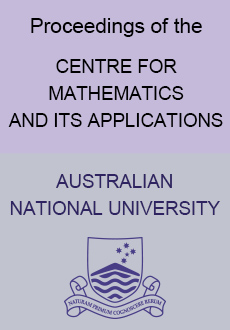Abstract
In essence, the spectral method simply involves: (i) the choice of a more or less arbitrary orthonormal system $\phi_j, j = 1,2,3, \dots , $ to define approximations of the form \[ u_n = \sum_{j=1}^{n} a_{j}^{(n)} \phi_j \] with unknown (constant) coefficients $a_{j}^{(n)}, j = 1,2, \dots , n ;$ and (ii) the choice of n conditions which, in conjunction with the problem being solved, yield a non-singular matrix equation \[ L_n \hspace{.1in} {\operatorname{\it a}\limits_{\smash{\Large\tilde{}}}}^{(n)} = {\operatorname{\it f}\limits_{\smash{\Large\tilde{}}}}^{(n)}\hspace{.1in} , \hspace{.1in} {\operatorname{\it a}\limits_{\smash{\Large\tilde{}}}}^{(n)} = [a_{1}^{(n)},a_{2}^{(n)}, \dots , a_{n}^{(n)}]^T, \] for the $a_{j}^{(n)}, j = 1,2, \dots , n ,$ where the structure of the matrix $L_n$ and the right-hand-side vector ${\operatorname{\it f}\limits_{\smash{\Large\tilde{}}}}^{(n)}$ will depend on the choice of the $\phi_j, j = 1,2,3, \dots , $ the problem being solved, and the n conditions.
Because of its success, it is often viewed as a standard "ansatz" for the numerical solution of ordinary and partial differential equations as well as integral equations. The key to this success is the choice of the $\phi_j, j = 1,2,3, \dots , $ to be an orthonormal system; not the n conditions of (ii). In this paper, we show how theory developed by Mikhlin for studying the numerical performance of variational methods can be used to identify to what extent an arbitrary choice of an orthonormal system can be justified numerically. In particular, we show for the Ritz-Galerkin and Bubnov-Galerkin counterparts of the spectral method that suchan arbitrary choice guarantees numerical stability, but not the convergence of the residual for ordinary and partial differential equations. The additional conditions necessary to guarantee the latter are also discussed.
Information


